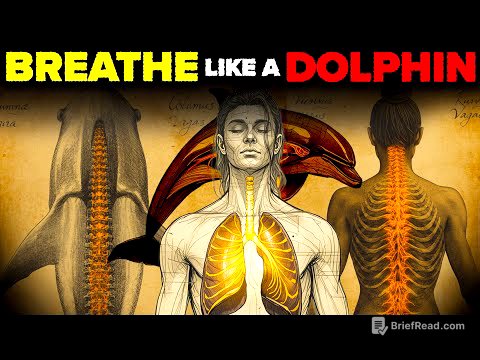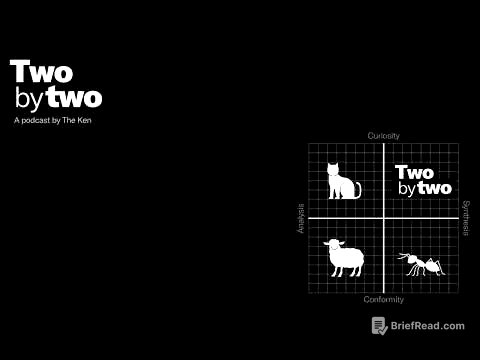TLDR;
The Book of Lamentations is a collection of five poems reflecting on the destruction of Jerusalem and the subsequent exile. It uses lament as a form of protest, emotional processing, and questioning God's character. The book's structure, especially the acrostic poems, contrasts with the chaotic grief it expresses. It explores themes of grief, divine wrath, hope amidst despair, and the importance of voicing suffering. The book concludes with unresolved tension, acknowledging God's eternal kingship while questioning His presence in Israel's suffering.
- The book contains five poems reflecting on the destruction of Jerusalem.
- Lament is used as a form of protest and emotional processing.
- The acrostic structure contrasts with the chaotic grief expressed.
- Themes include grief, divine wrath, and hope amidst despair.
- The book emphasizes voicing suffering and concludes with unresolved tension.
Introduction to Lamentations [0:02]
The Book of Lamentations is a unique Old Testament book featuring five poems by an anonymous author reflecting on the Babylonian siege of Jerusalem and its aftermath. This event, detailed in 2 Kings, was a major catastrophe in Israel's history, impacting the promised land, Davidic kingship, and the temple. The book serves as a memorial to the pain and confusion experienced by the Israelites following this destruction.
The Nature of Lament Poems [0:52]
The lament poems in Lamentations, similar to those in Psalms, serve as a protest, drawing attention to the world's horrors and processing emotions. They allow God's people to express anger and dismay at the ruin caused by sin, giving voice to confusion and questions about God's character. The Bible doesn't look down on these expressions but rather gives sacred dignity to human suffering, making these words of grief addressed to God a part of God's Word.
Structure and Design of the Poems [1:42]
The design of the five poems is intentional, contributing to the book's message. Chapters 1-4 are acrostics, with each verse beginning with a letter of the Hebrew alphabet. This ordered structure contrasts with the disorder of pain and grief explored in the poems, representing an A-to-Z exploration of Israel's suffering. Chapters 1 and 2 have one verse per letter, while chapter 3 has three verses per letter, making it the longest poem.
Chapter 1: Lady Zion's Grief [2:21]
Chapter 1 focuses on the grief and shame of Lady Zion, a personification of Jerusalem as a bereaved widow. She sits alone, devastated and without comfort. Lady Zion calls on the Lord to notice her fate, illustrating the psychological trauma inflicted on the Israelites by the city's destruction, akin to the death of a loved one.
Chapter 2: The Fall of Jerusalem and God's Wrath [2:50]
Chapter 2 addresses the fall of Jerusalem as a consequence of Israel's sin and God's wrath. In the Bible, God's wrath represents His justice, not spontaneous anger. Israel violated their covenant with God through idolatry and injustice. God's anger, though slow, is a response to human evil, manifested in allowing Babylon to conquer Jerusalem. The poem acknowledges the justification for God's wrath but still laments and asks for compassion.
Chapter 3: Hope Amidst Suffering [3:45]
Chapter 3 deviates from the pattern with three verses per letter and features a lonely man speaking from his suffering as a representative of the people. Drawing from laments in Job, Psalms, and Isaiah's suffering servant poems, the poet sees his hardship as God's justice. Paradoxically, this realization leads to hope, with the poet declaring, "Because of the Lord's covenant faithfulness we perish His mercies never fail they're new every morning how great is your faithfulness Oh God". The poet reasons that God's consistency in justice implies consistency in fulfilling His covenant promise.
Chapter 4: The Siege of Jerusalem [4:54]
Chapter 4 returns to the alphabet structure, vividly depicting the two-year siege of Jerusalem. It contrasts the past with the present: children who once laughed now beg for food, the wealthy now scavenge in the dirt, and royal leaders are famished and unrecognizable. The Davidic king is captured and dragged away. The poem's power lies in these shocking contrasts, exploring the depth of self-inflicted suffering.
Chapter 5: A Communal Prayer for Mercy [5:40]
The final poem breaks the acrostic pattern, symbolizing the poet's inability to maintain order amidst grief. It is a communal prayer for God's mercy, with Israel begging God not to ignore their suffering. The poem lists those devastated by the city's fall, lamenting on behalf of others. The book emphasizes voicing pain rather than suffering in silence, encouraging God's people to express their emotions before Him.
Conclusion: Unresolved Tension [6:29]
The book concludes with a paradox, acknowledging God as the eternal king while recognizing Israel's feeling of abandonment. The final words leave this tension unresolved, questioning whether God has completely rejected them. The poet doesn't offer a neat conclusion, mirroring the complexities of pain and suffering. The Book of Lamentations highlights the importance of lament, prayer, and grief in the faith journey of God's people in a broken world.









